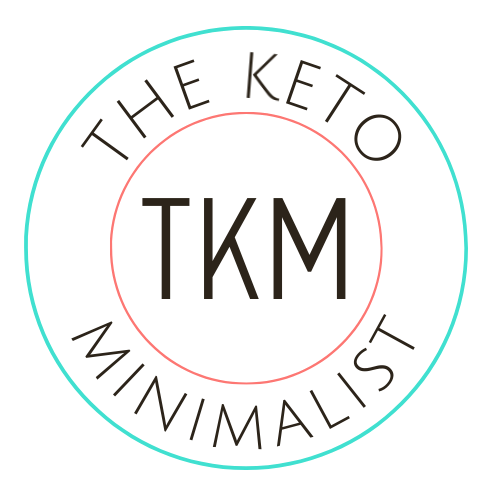Are Microgreens Keto? 10 Ways to Eat Microgreens (and why you should).
/Microgreens, the young seedlings of herbs and vegetables, are definitely keto and can be easily included in your diet to enhance the flavor, appearance, and nutritional content of almost any keto meal. Microgreens are basically a keto “free food” as a 1/2 ounce portion averages 0-2 grams carbs, 0 grams fat, 0 grams protein. Microgreens are packed with tons of nutrients, including antioxidants, vitamins E, C, K, and beta-carotene, and in minerals potassium, iron, zinc, copper, and magnesium. Including a handful of microgreens on your keto diet is a great way to add flavor, boost the nutrition of your diet, and have almost no effect on your daily macros.
In this post I’ll answer all your questions about including microgreens in a keto diet:
Are microgreens keto?
What are microgreens and why are they wildly popular now?
Types of microgreens.
Why microgreens are so healthy.
10 creative ways to use microgreens in a keto diet.
Where to buy microgreens.
How to grow microgreens - a beginner’s tutorial
How to store microgreens.
Can you use microgreens powder for the same health benefits?
Are microgreens keto? 10 ways to eat microgreens (and why you should).
What are microgreens and why are they wildly popular?
Microgreens are tiny seedlings of vegetables, greens, and herbs that are usually harvested about one to two weeks after germination. They are generally one to three inches long and you can find them at most grocery stores and farmer’s markets. You can also easily grow them yourself (and I have simple instructions below).
Microgreens are tender, come in a rainbow of colors depending on the plant, and usually have a delicate flavor that hints of the flavor of the mature plant. So broccoli microgreens have a faint broccoli taste, and radish microgreens have a hint of spicy radish.
There are varieties of microgreens (see the section on types of microgreens below), but some of the most common include: beet, radish, spinach, kale, broccoli, pea, arugula, and cilantro.
Microgreens are usually eaten raw and definitely wash them before eating. I recommend using a veggie wash (like this one) you can find on Amazon.
Microgreens are not sprouts.
They are NOT the same as sprouts. Sprouts (which have wonderful health benefits too) are literally seeds sprouted in water and eaten before leaves form, while microgreens are the tiny new plant with leaves.
Microgreens are wildly popular now because they are add color and flavor to almost any dish.
Chefs at upscale restaurants love to incorporate microgreens as a beautiful (and tasty) garnish. The microgreens not only look beautiful on the plate (as you will see from some of the photos in this post), but they add color to a dish, and a distinctive flavor.
Just because you’re not a chef doesn’t mean you shouldn’t include microgreens in your keto diet. They have lots of health benefits and can be easily be a part of your keto diet.
Microgreens are popular because of the health benefits.
I’ll talk about the health benefits in more detail below, but microgreens are incredibly healthy, high in vitamins, loaded with antioxidants, and are more nutritious than their fully-grown plant.
Are microgreens keto friendly?
Yes! Microgreens are definitely keto friendly. In fact, if you’re a keto eater who tends to eat lots of fat and protein and very little veggies, including microgreens in your low carb diet is a great way to boost nutrition.
First, what is a keto diet?
A keto diet is one that is high in fat, moderate in protein, and low in carbs.
Because carbs are kept so low, your body shifts from burning sugar (glucose) to burning fat for energy. When you burn fat as fuel, you are in ketosis.
The way it works for most people is to replace the carbs in their diet (pasta, bread, sweets, potatoes, etc.) with fat.
For many beginners, a good macro ratio to start with is 70-75% fat, 20-25% protein, and 5-10% carbs.
The amount of carbs someone can eat on a keto diet and stay in the fat-burning state is usually from 20 to 50 net grams of carbs.
If you want to learn more about the benefits of a keto diet.... LINK
Nutritional information for microgreens.
The specific macros and nutrition information for microgreens varies according to the plant. So radish microgreens will have a slightly different profile than mustard microgreens.
Here are is the nutritional information for a few common types of microgreens, according to MyFitnessPal:
Sunflower microgreens (1/2 ounce): 4 calories, 0.5 gram carbs, 0 grams fat, 0 grams protein
Broccoli microgreens (1/2 ounce): 9 calories, 2 grams carbs, 0 grams fat, 1 grams protein
Radish microgreens (1/2 ounce): 5 calories, 0.5 grams carbs, 0 grams fat, 0 grams protein
Pea shoot microgreens (1/2 ounce): 3 calories, 0.5 grams carbs, 0 grams fat, 0 grams protein
Arugula microgreens (1/2 ounce): 4 calories, 1 gram carbs, 0 grams fat, 0 grams protein
Beet microgreens (1 ounce): 18 calories, 4 grams carbs, 0 grams fat, 2 grams protein
Let’s put this into perspective….
One-half ounce of microgreens is A LOT. For example, packages of BrightFresh microgreens (specifically the Micro Rainbow Mix) has 1.75 ounces. A suggested serving size is 1/4 of the containers which is a little bit less than 1/2 an ounce. The nutritional facts listed on the container are a whopping 4 calories per serving, 0 grams carbs, 0 grams, fat, 0 grams protein.
In my keto minimalist eyes, microgreens are essentially a free food. They add tons of nutritional value to your diet and have almost no calories or carbs.
A handful or two of microgreens a day on a low carb diet will have almost no impact on your daily macros, and I have lots of ideas how to include microgreens in your diet below. You can continue to eat keto as you normally do, and simply add in microgreens to boost your nutrition.
Types of microgreens.
There are over 100 different types of microgreens! You can eat one variety on it’s own, like arugula microgreens or beet microgreens, or you can grow (or purchase) mixes that combine two or more types of greens.
Here are the most common types of microgreens:
arugula
radish
mustard
kale
spinach
red cabbage
cauliflower
green daikon radish
cilantro
watercress
basil
sunflower
pea
buckwheat
sorrell
cress
carrot
broccoli
beet
parsley
kohlrabi
chives
cauliflower
Swiss chard
Are microgreens healthy? And what health benefits do they have?
Yes!! Microgreens have a ton of nutritional value packed into a tiny little plant.
Microgreens are more nutritious than eating the mature plant.
I've heard it explained that eating microgreens is like getting the health benefits of the whole plant (radish, kale, broccoli, etc.) in a tiny seedling package.
But that’s wrong! Microgreens are actually healthier than the mature plant.
A study published in Journal of Agricultural and Food Chemistry showed that microgreens have 4 to 40 times more concentrated nutrients than in the mature plants. Read about it here.
Another study, published in the same journal in 2018, concludes that “In general, microgreens contain greater amounts of nutrients and health-promoting micronutrients than their mature counterparts.”
The good news is that because microgreens are so rich in nutrients, you can eat smaller amounts of the greens to get the same nutritional effect of a large quantity of mature veggies. Check out the study here.
Microgreens are high in vitamins and minerals.
The nutrition profile will depend on the particular plant, but most are high in vitamins K, C, E, lutein, and beta-carotene.
Most varieties are also rich in potassium, iron, zinc, copper, and magnesium.
Those nutrients help keep your skin and eyes health, and have cancer-fighting properties.
Microgreens are rich in antioxidants.
Studies have shown that these baby greens contain large quantities of polyphenols and other antioxidants. A diet high in antioxidants may reduce the risk of many diseases, including heart disease and certain cancers.
The brighter the microgreen, the more nutritious it is.
When choosing microgreen varieties to grow or to purchase, look for ones with the brightest color because, according to experts, the more brightly colored the vegetable, the more protective the health benefits, thanks to a rich assortment of plant compounds called phytochemicals.
I hope you can see the benefits of including microgreens in your low carb diet. Now let’s talk about how to get your daily fix of greens, no special recipes needed.
10 delicious ways to use microgreens in your keto diet.
There are loads of ways to include microgreens in your diet and you are only limited by your imagination.
Keep in mind that microgreens are best when eaten raw and uncooked. So think of them as a garnish or the ingredient you add last in a recipe.
Here are some of my favorites ways to enjoy microgreens:
1 - Use as an ingredient in any salad or make a simply delicious microgreens salad.
2 - Use as a super healthy (and flavorful) garnish for meats and seafood.
3 - Toss a handful into your favorite keto smoothie.
4 - Sprinkle on top of omelets, fried or scrambled eggs .
5 - Use in place of boring ol’ lettuce in keto sandwiches, tacos, and burgers.
6 - Garnish your favorite keto soup recipes with microgreens.
7 - Serve meat, poultry, or seafood on a bed of microgreens, with or without other tasty greens like spinach, and kale.
8 - Sprinkle microgreens on homemade or store-bought cauliflower crust pizza (after baking).
9 - Boost the nutrition of uncooked sauces and spreads like pesto, guacamole, and salsa verde.
10 - Top roasted veggies or stir fries with microgreens.
Where to buy microgreens.
I’m writing this in the midst of the COVID-19 pandemic so, as you’re likely aware, stores don’t always stock the things they used to in the past. Along with egg, pasta, rice, and toilet paper shortages, there is a possibility it’s harder to find microgreens these days.
Grocery and health food stores.
Most large grocery stores had microgreens in the produce section, particularly stores like Whole Foods, Trader Joe’s, and Sprouts. In my area they are still available; it’s things like rice, pasta, and toilet paper that are hard to find.
BrightFresh is just one company that grows microgreens and supplies them to stores all across the U.S. You can use this product locator to find a store near your: BrightFresh Product Locator
Farmer’s markets.
Farmer’s markets, if they are open in your area, are a good bet to find locally grown microgreens.
How to grow microgreens at home. A beginner’s tutorial.
Microgreens are grown either in soil or hydroponically (which means in water). They are easy to grow at home using just seeds and a few supplies. And it’s fun as well!
Supplies:
Microgreen seeds. You can either purchase a microgreens mix or just choose seeds from one of the common microgreens variety I listed earlier in this post, like radish, arugula, or cilantro.
Potting mix.
A shallow container. You can purchase a microgreens grow tray like THIS, or just use a to-go container, foil pie plate, or other similar shallow container you have around the house.
Lid for your container or piece of cardboard approximately the same size.
Clean spray bottle with misting capability.
Super simple guide to growing microgreens:
Fill your shallow container with moist potting mix. Gently press the potting mix down to create a level surface. (Make sure to use potting mix and not potting soil.)
Sprinkle your seeds generously on top of the potting mix. You don’t need to leave space between the seeds. Gently press the seeds onto the top of the soil. (They will sit on top of the potting mix, and will not be covered.)
Using the spray bottle, mist the seeds with water.
Gently cover the seeds with a piece of cardboard cut to the same size as the container.
Remove the lid and mist the seeds once or twice a day to keep the soil damp.
When the seeds sprout, in about 3 to 7 days, remove the lid and place the container in near a sunny window, or outside in a sunny location.
Continue to gently water every day.
Harvest when the microgreens are 1-3 inches in height. Using scissors, snip the plant near the soil.
Be sure to wash before consuming.
This video tutorial is one of my favorites…
There are several microgreens growing kits available on Amazon, if you want to have everything you need:
How to store microgreens.
If possible, harvest and use your microgreens as needed. So snip a portion to use today, and tomorrow snip a bit more.
But if you have to harvest all of your microgreens, definitely rinse them in cold water or, ideally, wash with a veggie wash, prior to storing in the refrigerator.
Pat the microgreens gently with a paper towel to remove as much moisture as possible.
Line a glass container (I love these clear glass locking containers for all my food storage) with a paper towel. Top with dried microgreens, and another paper towel to keep moisture away.
Use within one week.
Can you use microgreens powder for the same health benefits on a keto diet?
There are “greens powder” supplements on the market which are designed to be used in keto shakes and smoothies. Most do not use microgreens. Rather they have powdered leaves of mature plants, such as spinach, kale, and kohlrabi, and often other ingredients like probiotics, berries, and added fiber.
Definitely check the labels before using, because many super greens powders are high in carbs.
It’s also not the same thing as using a real, live, green in your keto meals. You can’t artfully garnish a delicious medium rare ribeye with a sprinkle of greens powder. You can’t use a powder to top your morning omelet.
In my opinion it’s comparing apples to oranges, so to speak. You can boost the nutrition of your keto smoothie with some greens powder, but it is not “dried microgreens powder.”
If you are interested in a super food greens powder, these are relatively low in carbs and would work with a keto diet:
Perfect Keto Green Superfood Powder (0 grams net carbs per serving)
Green Surge Superfood Powder (3 grams net carbs per serving)
Nested Naturals Super Greens Powder (3 grams net carbs per serving)
Microgreens are nutritious, delicious, and perfectly keto. A handful of microgreens as a garnish for your low carb meal, or thrown into a keto shake is a great way to boost the nutrition of your keto diet.
—The Keto Minimalist
Struggling with keto?
If you are not losing weight, or can't shake the keto flu, or are not getting the results you want, it might be time for a reset. To take the time to really LEARN not just what foods are keto (we all know bacon and avocados are keto foods), but how to choose foods that work best for you.
If you want to go back to the basics I highly recommend Happy Keto Body. It's a 12 week online course that you can take at your own pace to learn about keto and customize an eating plan that suits your tastes and your health issues. No crazy ass "must do this" rules. No restricting carbs to 20g a day. No jumping into intermittent fasting if you don't want to. It's all about healing your body and eating for good health.
You can check out the The Happy Keto Body program here: Happy Keto Body
Be sure to PIN this post so you can find it in the future!














